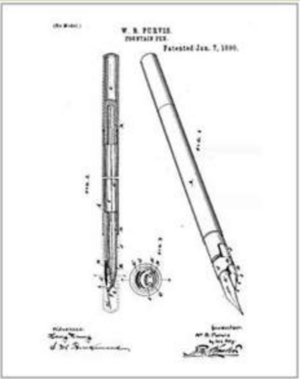William B. Purvis facts for kids
Quick facts for kids
William B. Purvis
|
|
|---|---|
| Born | August 12, 1838 |
| Died | August 10, 1914 (aged 75) |
| Known for | Inventions |
| Parents |
|
| Relatives | James Forten (grandfather), Charlotte Vandine Forten (grandmother), Robert Purvis (uncle), Margaretta Forten (aunt), Harriet Forten Purvis (aunt) |
William B. Purvis (born August 12, 1838 – died August 10, 1914) was an African-American inventor and businessman. He created many new things in the late 1800s. Some of his inventions made paper bags better, improved the fountain pen, and even helped electric trains run.
Contents
Early Life and Family
William B. Purvis was born in Philadelphia, Pennsylvania. He came from a rich and important family. His mother, Sarah Louisa Forten Purvis, was a well-known poet. His father, Joseph Purvis, was a farmer.
William had many famous relatives. His grandfather, James Forten, was an inventor and worked to end slavery. His uncle, Robert Purvis, was a rich businessman and also fought against slavery. Many of his aunts and cousins were educators, writers, or worked for civil rights.
William grew up on his father's farm in Bucks County, Pennsylvania. After his father passed away in 1857, his family moved to Philadelphia. William seemed to have a natural talent for inventing, just like his grandfather. He worked on many inventions and tried to get money to develop them.
Amazing Inventions
Better Hand Stamps
William Purvis received his first patent on February 27, 1883. This patent was for an improved hand stamp. His design allowed the stamp to refill its own ink. This made it much easier to use.
The Fountain Pen
Purvis also improved the fountain pen. He wanted to make a pen that was simple, strong, and cheaper to build. His goal was for people to easily carry it in their pockets.
He added a special elastic tube between the pen's tip (nib) and where the ink was stored. This tube helped send any extra ink back to the reservoir. Because of this change, the pen could spread ink smoothly when someone wrote. William Purvis got U.S. Patent 419,065 for this design on January 7, 1890.
Improved Paper Bags
William Purvis was very interested in paper bags. He worked hard to make the process of making them better. Between 1884 and 1897, he received at least six different patents for paper bag technology.
In August 1890, he got a patent for a machine that made "satchel bottom" shopping bags. This machine could make many more bags and was more automated than older machines. His machine used special parts that shaped the paper.
In 1883, Purvis started his own company, the Sterling Paper Bag Company. However, the company faced problems and closed down in 1894. Even though his company didn't last, William was able to sell some of his patents to other paper bag companies.
Electric Railway System
Purvis also invented a "close-conduit electric railway system." This system was first used in New Jersey. It used a powerful magnet under the train car. The system had special wires hidden in a closed path. These wires would connect with a brass strip, allowing electricity to power the train.
Experts believed this new system was safer and cheaper than older ones. They thought it would soon replace the old railway systems.
William Purvis made some money from this invention. He teamed up with other investors to create the Union Electric Construction Company. This company worked on building urban railway systems using his patents. For a while, he was the president of this company. By 1899, the company had offices in Philadelphia and looked for projects in many cities.
Later Years
William Purvis never got married. He lived with his sister, Harriet Anne "Annie" Purvis. Around 1905, they moved from Philadelphia to Sharon Hill, Pennsylvania.
In January 1914, he wrote the words for a song called "I'm Going Back Home Once More." The music for the song was by Francis M. Myers. The song was published and sent for copyright in April of that year.
William B. Purvis passed away on August 10, 1914, just two days before his 76th birthday. He was buried in Philadelphia, but his grave does not have a marker.
See also


